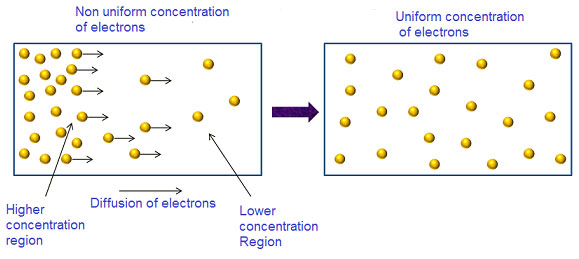We have already seen that if some voltage is applied to a semiconductor, the holes move towards the negative terminal of the battery and free electrons towards the positive terminal. This constitutes the electric current in a semiconductor. The combined effect of the movement of holes and free electrons which constitutes the electric current in a semiconductor is known as drift current.

It is possible for the flow of an electric current in a semiconductor, even in the absence of an applied voltage, provided a concentration gradient exist in the extrinsic semiconductor. A concentration gradient exist, if the number of either electrons or holes is greater in one region of a semiconductor as compared to the rest of the region. It has been observed that when a concentration gradient of carriers exist in a semiconductor, the carriers tend to move from the region of higher concentration to the region of lower concentration. This process is called diffusion and the electric current, produced due to this process, is known as diffusion current.
The process in which the movement of charge carriers takes place from the region of higher carrier concentration to the region of lower carrier concentration, is called diffusion.
The electric current produced due to the diffusion of charge carriers from the region of higher concentration to the region of lower concentration is known as diffusion current. The diffusion current per unit area is called diffusion density.
